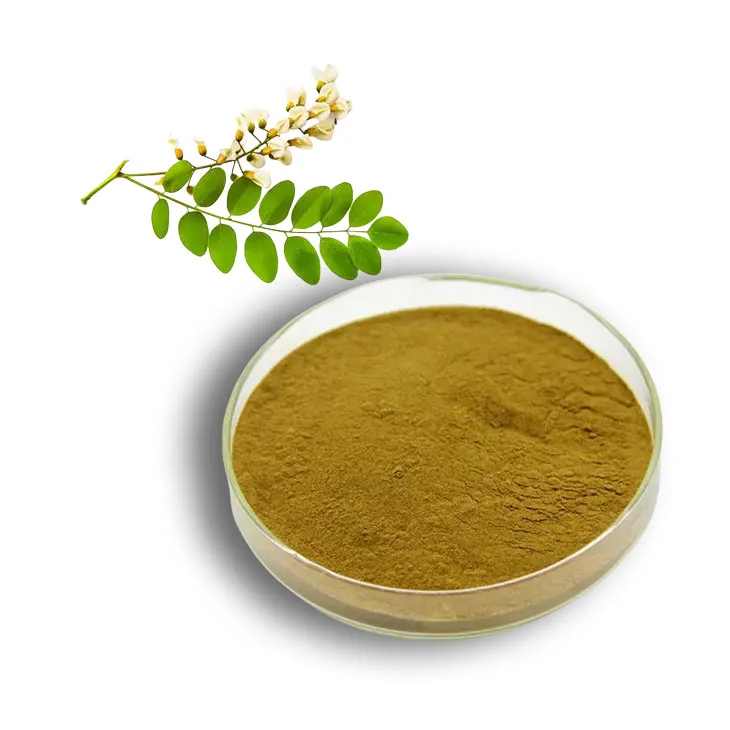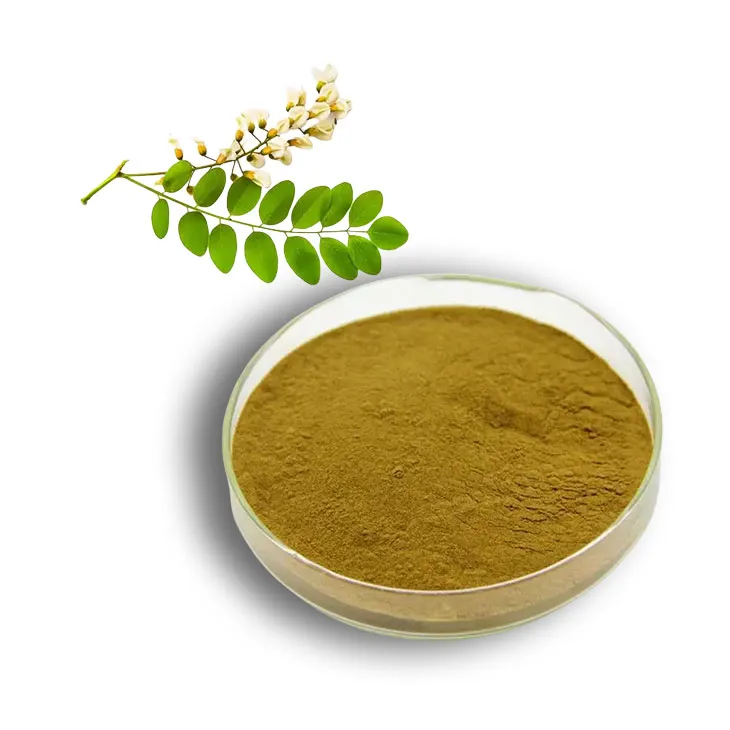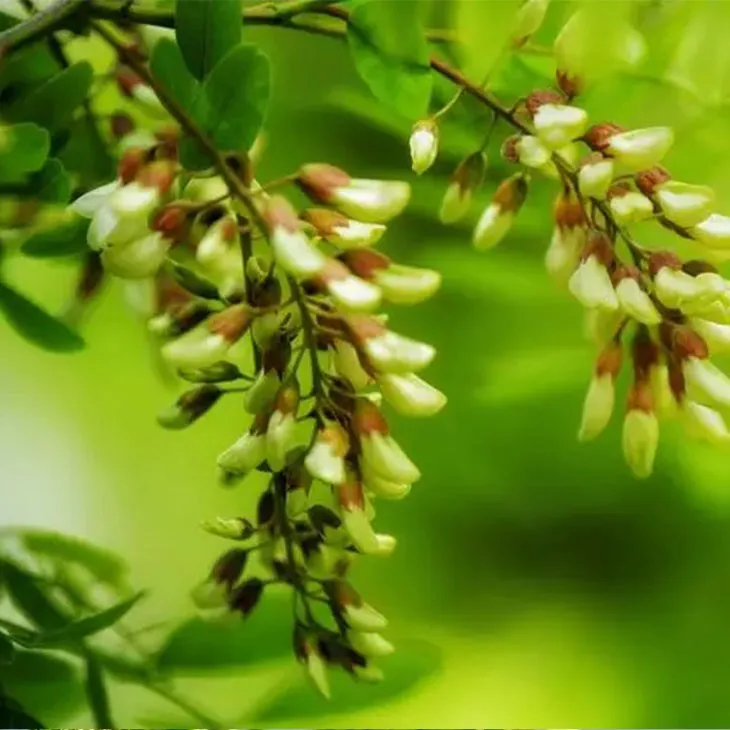- 0086-571-85302990
- sales@greenskybio.com
The best sophora japonica flower extract on the market.
2024-11-29

Introduction
Sophora Japonica Flower Extract has been gaining increasing attention in various industries due to its diverse properties and potential applications. Whether it is in the food, skincare, or pharmaceutical sectors, the quality of the extract plays a crucial role. Finding the best Sophora Japonica Flower Extract on the market is not a straightforward task, as it involves considering multiple factors. This article will explore these factors in detail to help consumers and industry professionals make informed decisions.

Source of the Raw Material
The origin of the sophora japonica flowers used for extraction is of fundamental importance.
Geographical Variation
Sophora japonica from different regions can exhibit significant differences in quality. For example, areas with suitable climate and soil conditions tend to produce flowers with better characteristics for extraction.
- In regions with a temperate climate, sophora japonica may experience a more stable growth cycle. The flowers are likely to develop a more balanced chemical composition, which can result in a higher - quality extract.
- Soil composition also plays a vital role. Soils rich in certain minerals and nutrients can enhance the growth and the production of beneficial compounds in the sophora japonica flowers. For instance, soils with adequate potassium levels may contribute to the development of stronger antioxidant properties in the flowers.
Sustainable Sourcing
In addition to geographical factors, sustainable sourcing of sophora japonica is becoming increasingly important.
- Sustainable harvesting practices ensure that the plant population is not depleted. This is crucial for the long - term availability of high - quality raw materials. For example, some regions have regulations on the amount of sophora japonica that can be harvested each year to protect the natural ecosystem.
- Ethical sourcing also takes into account the impact on local communities. When the sourcing is done in an ethical manner, it can support local economies and ensure the well - being of the people involved in the collection and cultivation of sophora japonica.

Extraction Technology
The extraction technology employed is a key determinant in the quality of Sophora Japonica Flower Extract.
Traditional Extraction Methods
Traditional extraction methods have been used for a long time and have their own characteristics.
- Solvent extraction is one of the common traditional methods. It involves using solvents such as ethanol or water to extract the active compounds from sophora japonica flowers. However, this method may have some limitations. For example, it may not be able to completely extract all the desired compounds, and there may be residues of the solvent in the final extract, which may affect its quality and safety in some applications.
- Another traditional method is maceration, where the flowers are soaked in a solvent for an extended period. This method is relatively simple but can be time - consuming and may also lead to the degradation of some active compounds during the long soaking process.
Modern Extraction Technologies
Modern extraction methods offer several advantages over traditional ones.
- Supercritical fluid extraction (SFE) is a state - of - the - art technology. In this method, supercritical fluids, often carbon dioxide, are used as the extraction medium. The supercritical state of the fluid has unique properties that allow for a more selective and efficient extraction. It can produce a more refined and high - quality sophora japonica flower extract. For example, SFE can better preserve the volatile compounds in the flowers, which are important for their aroma and some of their biological activities.
- Another modern method is ultrasonic - assisted extraction. Ultrasonic waves are used to enhance the mass transfer during the extraction process. This can significantly reduce the extraction time and improve the extraction yield. It also has the potential to maintain the integrity of the active compounds in the sophora japonica flowers.

Quality Control and Standardization
To ensure the quality of sophora japonica flower extract, strict quality control and standardization measures are essential.
- Chemical Analysis: Chemical analysis is carried out to determine the composition of the extract. This includes identifying and quantifying the main active compounds such as flavonoids, phenolic acids, etc. High - performance liquid chromatography (HPLC) and gas chromatography - mass spectrometry (GC - MS) are some of the techniques used for this purpose. For example, HPLC can accurately measure the levels of rutin, a major flavonoid in sophora japonica, which is an important indicator of the extract's quality.
- Microbial Testing: Microbial testing is necessary to ensure the safety of the extract. This involves checking for the presence of harmful bacteria, fungi, and other microorganisms. If the extract is intended for use in food or skincare products, strict limits are set for microbial contamination. For example, in the food industry, the extract must meet certain standards for total plate count, yeast, and mold counts.
- Standardization: Standardization of the extract ensures consistency in its quality. This can be achieved by setting specific criteria for the content of active compounds, physical properties such as color and odor, and performance characteristics. For instance, a standardized sophora japonica flower extract for use in herbal medicine may be required to have a certain minimum percentage of bioactive components to ensure its therapeutic efficacy.
Versatility and Applications
The versatility of sophora japonica flower extract is one of its most appealing features, and it has a wide range of applications.
-
In the Food Industry
- Herbal Teas: Sophora japonica flower extract can be used to flavor herbal teas. Its unique flavor profile, which is often described as slightly sweet and floral, can add a pleasant taste to the tea. Moreover, the potential health benefits associated with the extract, such as antioxidant and anti - inflammatory properties, make it an attractive ingredient for health - conscious consumers.
- Food Additives: The extract can also be used as a food additive. For example, it can be added to baked goods to enhance their antioxidant content. This can help in prolonging the shelf - life of the products and also provide some additional health benefits to consumers.
-
In the Skincare Industry
- Antioxidant Properties: The extract is rich in antioxidants, which can help protect the skin from oxidative stress. Oxidative stress is one of the main causes of skin aging, so using sophora japonica flower extract in skincare products can potentially slow down the aging process. For example, it can be incorporated into anti - aging creams, serums, and masks.
- Anti - Inflammatory Effects: The anti - inflammatory properties of the extract can be beneficial for treating various skin conditions such as acne, eczema, and dermatitis. It can help reduce redness, swelling, and irritation on the skin. Skincare products targeted at these conditions can include sophora japonica flower extract as an active ingredient.
-
In the Pharmaceutical Industry
- Medicinal Components: Sophora japonica flower extract contains several bioactive compounds that have medicinal properties. For example, some flavonoids in the extract have been shown to have anti - hyperglycemic effects, which can be useful in the treatment of diabetes.
- Traditional Medicine: In traditional medicine systems, sophora japonica has been used for centuries to treat various ailments. Modern research is now validating some of these traditional uses and exploring new potential therapeutic applications. Pharmaceutical companies may develop drugs or herbal remedies based on sophora japonica flower extract to treat a range of diseases.
Price and Cost - Effectiveness
When evaluating the best sophora japonica flower extract on the market, price and cost - effectiveness are also important considerations.
- Price Comparison: Different brands and suppliers may offer sophora japonica flower extract at varying prices. It is essential to compare the prices while also taking into account the quality of the extract. A lower - priced extract may not always be the best deal if it is of inferior quality. For example, an extract that has been produced using sub - standard raw materials or extraction methods may be cheaper but may not deliver the expected results in applications.
- Cost - Effectiveness in Applications: Consider the cost - effectiveness of the extract in its intended applications. For instance, in the production of herbal teas, if a slightly more expensive extract can significantly enhance the flavor and health benefits of the tea, resulting in increased sales, then it may be a more cost - effective option in the long run. In the skincare industry, an extract that is more effective in treating skin conditions may justify a higher price as it can lead to better product performance and customer satisfaction.
Conclusion
In conclusion, finding the best sophora japonica flower extract on the market requires a comprehensive evaluation of multiple factors. The source of the raw material, extraction technology, quality control, versatility of applications, and price all play important roles. By carefully considering these aspects, consumers and industry professionals can select the sophora japonica flower extract that best meets their needs, whether it is for personal use in herbal teas or skincare, or for commercial applications in the food, skincare, or pharmaceutical industries.
FAQ:
Question 1: How can we determine the source of raw materials for honey locust extract?
One way is to look for information provided by the manufacturer. Reputable manufacturers usually disclose the origin of their raw materials. Another method is to research regions known for high - quality honey locust production. Areas with favorable climate and soil conditions are likely to be good sources, and this information can be obtained from agricultural research or local agricultural departments.
Question 2: What are the advantages of supercritical fluid extraction in honey locust extract production?
Supercritical fluid extraction has several advantages. It can produce a more refined extract as it can precisely target and extract the desired components. It often results in a higher - quality extract with better purity compared to traditional methods. This extraction method can also operate at lower temperatures, which helps to preserve the heat - sensitive components in the honey locust, maintaining its beneficial properties.
Question 3: In which skincare products can honey locust extract be used?
Honey locust extract can be used in various skincare products. It can be found in anti - aging creams due to its antioxidant properties, which help to fight free radicals and reduce the signs of aging. It can also be used in moisturizers as it may have hydrating properties. Additionally, in some acne - treating products, it might be included for its potential anti - inflammatory effects.
Question 4: How can we ensure the quality of honey locust extract in the market?
To ensure the quality, first check for certifications from relevant regulatory bodies. Look for products that have been tested for purity and safety. Research the reputation of the brand or manufacturer. High - quality products often come from companies with a good track record in production and quality control. Also, consider the extraction process and source of raw materials as discussed earlier.
Question 5: What are the potential health benefits of consuming honey locust extract in herbal teas?
When consumed in herbal teas, honey locust extract may offer several potential health benefits. It could have antioxidant effects, which help protect the body's cells from damage. It may also have anti - inflammatory properties, potentially reducing inflammation in the body. Additionally, it might aid in digestion due to its possible impact on the digestive system, although more research is needed to fully understand these effects.
Related literature
- The Properties and Applications of Honey Locust Extract"
- "Supercritical Fluid Extraction of Botanical Extracts: A Case of Honey Locust"
- "Honey Locust in Herbal Medicine: A Comprehensive Review"
- ▶ Hesperidin
- ▶ citrus bioflavonoids
- ▶ plant extract
- ▶ lycopene
- ▶ Diosmin
- ▶ Grape seed extract
- ▶ Sea buckthorn Juice Powder
- ▶ Beetroot powder
- ▶ Hops Extract
- ▶ Artichoke Extract
- ▶ Reishi mushroom extract
- ▶ Astaxanthin
- ▶ Green Tea Extract
- ▶ Curcumin Extract
- ▶ Horse Chestnut Extract
- ▶ Other Problems
- ▶ Boswellia Serrata Extract
- ▶ Resveratrol Extract
- ▶ Marigold Extract
- ▶ Grape Leaf Extract
- ▶ blog3
- ▶ blog4
-
Chinese Grape Seed Extract Powder Factory.
2024-11-29
-
Vitamin K2 in China vs. the United States.
2024-11-29
-
Nature's Bounty L - Arginine
2024-11-29
-
The Pure Rosehip Extract Most Worth Buying.
2024-11-29
-
Tormentil Extract
2024-11-29
-
Sophora Flavescens Root Extract
2024-11-29
-
Genistein
2024-11-29
-
Tongkat Ali Extract Powder
2024-11-29
-
Sea buckthorn Juice Powder
2024-11-29
-
Saffron Extract Powder
2024-11-29
-
Cat Claw Extract
2024-11-29
-
Polygonum multiflorum extract
2024-11-29
-
Yellow Pine Extract
2024-11-29
-
Giant Knotweed Extract
2024-11-29





















